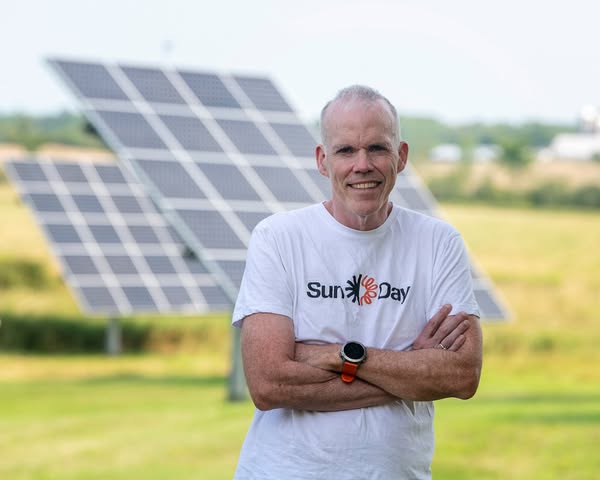Commentary
HOPE FOR THE FUTURE

This is one in a continuing series of educational columns about fostering environmental stewardship and leadership coordinated by ACES — The Alliance of Climate and Environmental Stewards.
In a lecture at Boston College last week, world-renowned author and climate justice activist Bill McKibben made the case for why climate justice is a worthwhile fight—and why clean energy is far more realistic than people think.
Bill talked about pockets of hope within the country, like California’s use of renewable energy, which has decreased its natural gas consumption by 40 percent over the past two years, and Texas’ regulations that slant toward free-market energy, historically allowing wind and solar energy to thrive in local communities (although now possibly facing Republican efforts to roll back the competitive advantages of renewables over natural gas generation).
The point Bill was making, and a lot of other reports are showing, is that new renewable energy generation can—and is—moving past old, dirty fossil fuel use not only in the U.S. but also internationally. "Sun Day,” celebrated on Sept. 21, was created to convince local leaders that wind and solar energy are the future, and cities across the country will be observing the holiday as people advocate for change. Solar, wind, and batteries provide the least expensive source of power on the planet. Their rapid adoption around the world gives new hope both for the climate and for the economic health of the countries that utilize them.
As the podcast Volts reported on the Sun Day site, Pakistan has seen an explosion of small, distributed solar sites, with almost none on utility-scale solar farms. Inexpensive, Chinese-produced solar panels are going on Pakistani roofs, barns, and over irrigation canals. Volts states, “Distributed solar is breaking over Pakistan like a tidal wave, despite utilities and a grid that do not seem entirely prepared for it.”
At home, despite the U.S. administration favoring its fossil fuel allies, clean energy is here to stay and expanding. In fact, the dramatic increase in AI data facilities around the country leans toward creating mostly clean energy sources for power.
Washington State farmers are building out solar arrays on their land to protect their apple crops from the heat and sun while eliminating their energy bills and supplementing their crop revenues (agrivoltaics). On even larger scales, in areas where water has become ever more scarce, livestock ranchers are leasing their land for solar farms as an alternative to traditional ranching.
Even closer to home, Newburyport should be credited, at least in a small way, with helping jump-start this solar-powered revolution locally. In 2012, Newburyport participated in Solarize Mass, a state program that encouraged adoption of residential solar power. Back then, it was unique to see power being generated on our local rooftops. Now it’s not only common, but it has become a mainstream option for many homeowners.
The Tannery, Newburyport’s iconic industrial buildings converted to a retail shop destination, proudly installed solar on its roofs years ago, and more recently, that same developer’s Hillside Center for Sustainable Living is a beautiful solar-powered addition to our housing stock.
So, this Sunday, which we will recognize as “Sun Day,” why not read about your own options to adopt solar power? (https://www.sunday.earth/).
It’s not too late to help the Earth and bend the curve leading to climate disaster toward a less-polluting and less-expensive energy future for us all. Why not explore your own possibilities to enjoy solar power?
ACES team members believe everyone can make a BIG difference together. We invite you to stay updated on environmental matters by subscribing to our monthly newsletter via the “Subscribe to Updates” link on ACES’ website – https://www.aces-alliance.org/.
This educational column was originally published by The Daily News of Newburyport on Sepetember 19, 2025.
.svg)



.jpeg)


